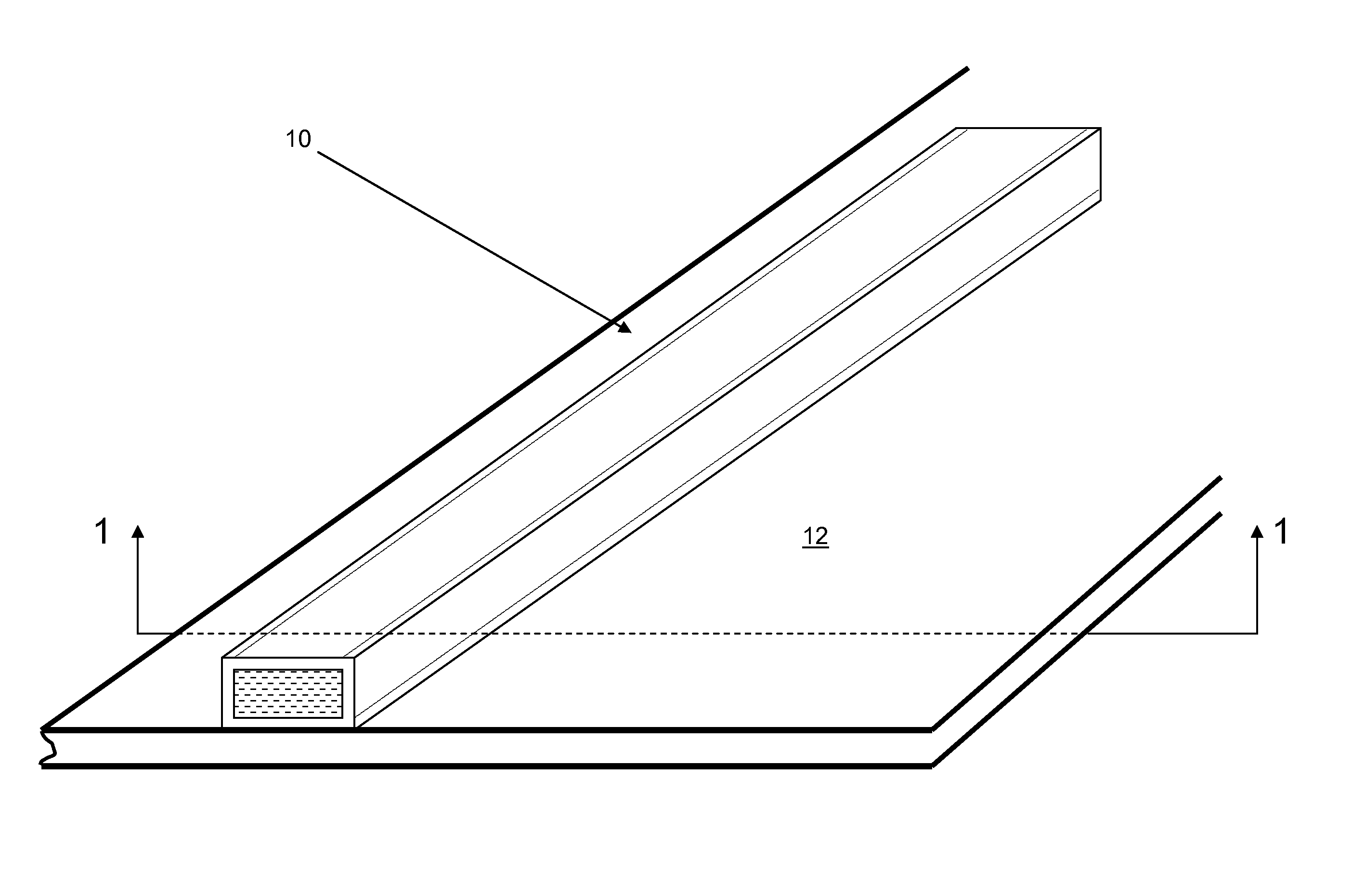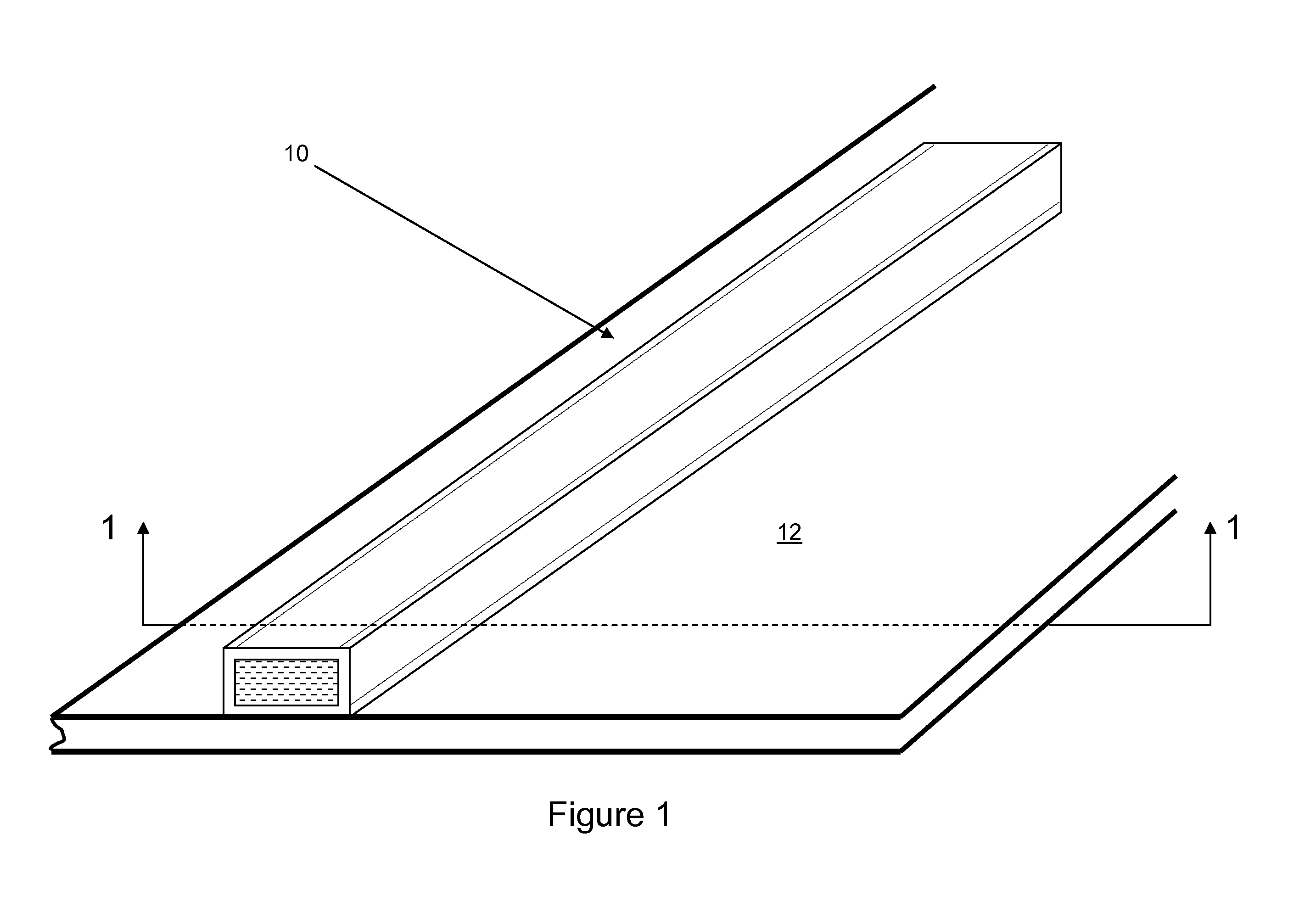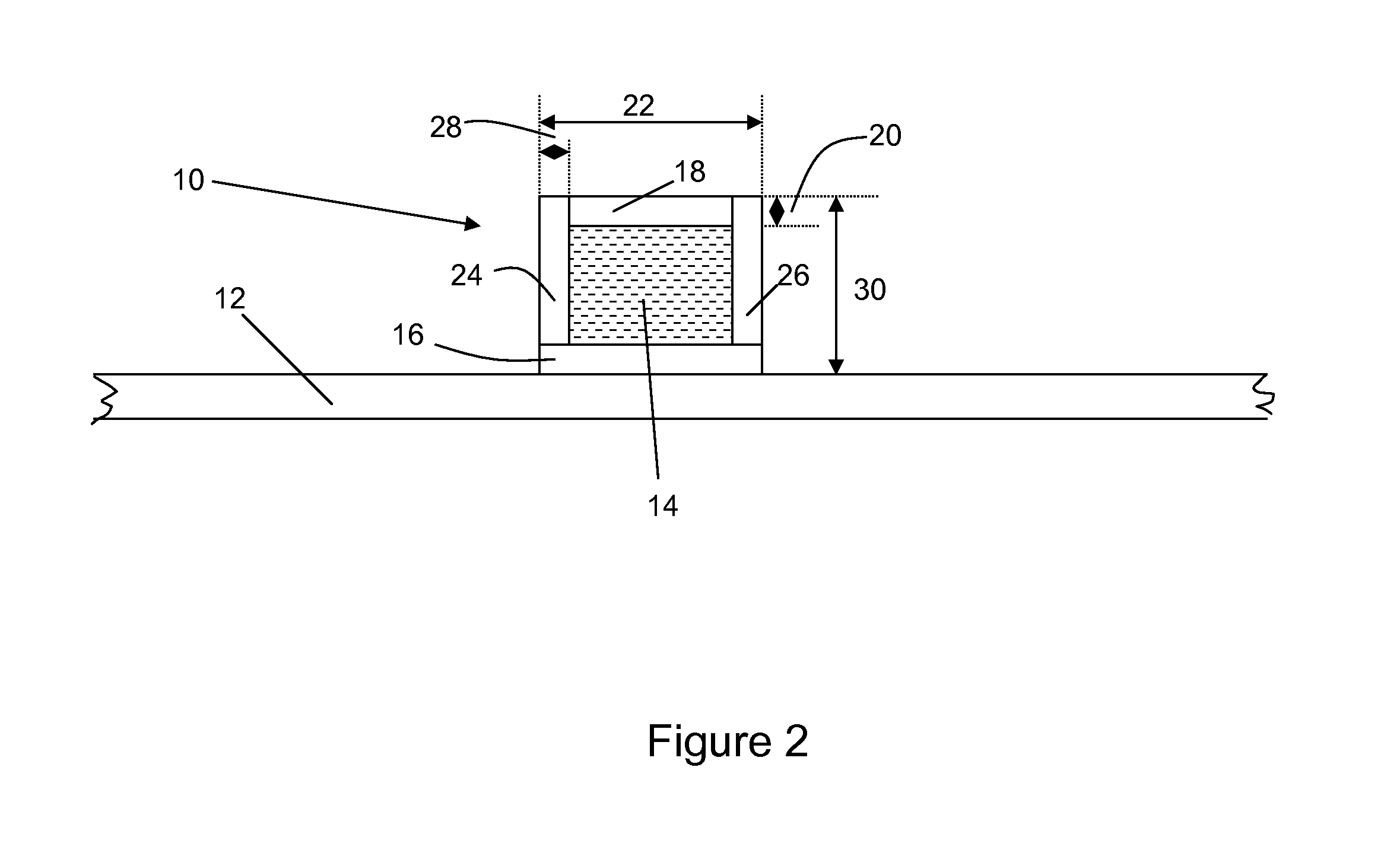Dielectric-filled transmission lines
a technology of dielectric filling and transmission lines, applied in the field of electric conductors, can solve the problems of increasing complexity and density of circuit boards, affecting the development of circuit boards, and affecting the electrical properties of lines, so as to reduce dielectric loss, and reduce the loss of dielectrics.
- Summary
- Abstract
- Description
- Claims
- Application Information
AI Technical Summary
Benefits of technology
Problems solved by technology
Method used
Image
Examples
Embodiment Construction
[0022]Referring to FIGS. 1 and 2, a printed circuit board transmission line 10 disposed on a substrate 12 has a tube-like outer conductive wall surrounding an inner dielectric core 14 (see FIG. 4). As seen in FIG. 2, the outer conductive wall includes four conductive sidewalls 16, 18, 24, 26 which are connected to form a continuous, uninterrupted structure having a rectangular cross-section. It should be noted however that other cross-sectional geometries including but not limited to triangular, circular, and any four-sided structure may be employed. First and second ones of the sidewalls 16, 18 are formed from copper or other electrically conductive material in a manner known for formation of conductive traces on a substrate layer of a printed circuit board. Further, the first and second sidewalls may have a thickness 20 similar to known conductive traces, such as 10-25 microns. The conductive wall has a width 22 similar to known conductive traces, such as 50-400 microns. Third and...
PUM
 Login to View More
Login to View More Abstract
Description
Claims
Application Information
 Login to View More
Login to View More - R&D
- Intellectual Property
- Life Sciences
- Materials
- Tech Scout
- Unparalleled Data Quality
- Higher Quality Content
- 60% Fewer Hallucinations
Browse by: Latest US Patents, China's latest patents, Technical Efficacy Thesaurus, Application Domain, Technology Topic, Popular Technical Reports.
© 2025 PatSnap. All rights reserved.Legal|Privacy policy|Modern Slavery Act Transparency Statement|Sitemap|About US| Contact US: help@patsnap.com



